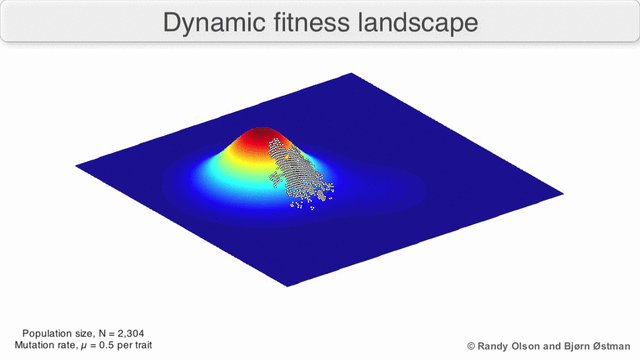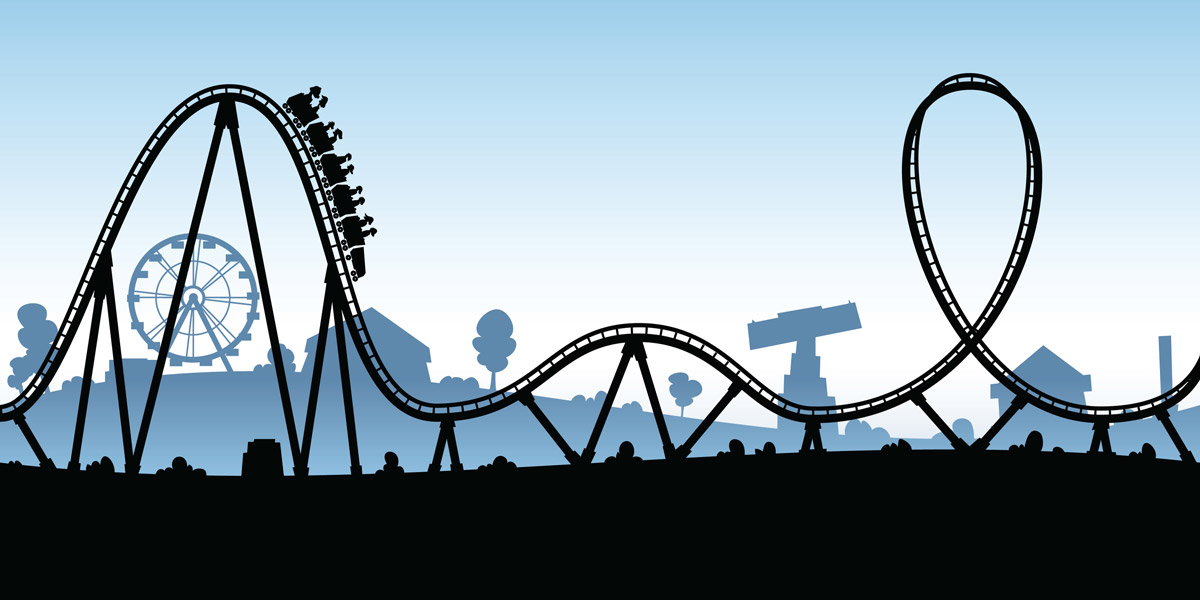Voltemos à tabela 1:
O que vemos ali dentro da área sublinhada é um retrato fiel do paradigma económico do século XX.
Não admira a evolução do número de sobreviventes:
No modelo económico do século XX, o modelo gerado pela Revolução Industrial e que atingiu o seu apogeu no século XX, só existe um pico na paisagem competitiva. No final só pode existir um vencedor.
Mas em Mongo, o modelo económico deixa de ser único e abrem-se muitos outros picos:
Cada pico representa uma hipótese de procurar o sucesso. E ter sucesso num pico pouco tem a ver com ter sucesso num outro pico. Daí a minha exortação, concentrem-se nos clientes-alvo e não na concorrência.
Recomendo uma comparação das duas colunas, na figura acima, entre "Traditional Craft Brewing" e "Modern Industrial Brewing" - dois modelos tão diferentes!!!
O que é que aconteceu para que o renascimento típico de Mongo ocorresse a partir dos anos 70 do século passado?
"The dominance of the large industrial brewers led to substantial diminishment and, ultimately, dissolution of the roles of field actors who used to carry traditional craft brewing. But this decomposed logic left behind institutional remnants that continued to be at least partially conserved [Moi ici: Isto faz-me lembrar uma empresa de calçado que conheço que tem uma fatia muito grande de trabalhadores reformados. Gente com mais de 65 anos e que continua a trabalhar. A quantidade de gente que domina a arte de cortar pele à mão é impressionante. Sobretudo nestes tempos de balancés e máquinas de corte.]Continua.
...
While these remnants appear to be important resources for institutional change, regenerating them was rife with challenges due to their significant degree of decomposition. First, although there were individuals who could act as custodians of these institutional remnants, they were dispersed and had either become disembedded from the field or had completely switched to modern industrial brewing. Until 1980, there had been no collective efforts in the field to maintain or conserve elements of the craft-brewing logic. Craft-brewing remnants were therefore scattered around the field. Second, the remaining remnants provided only an incomplete set of representations of the traditional logic, which was insufficiently actionable.
...
Traditional craft brewing had come to be associated with inferior quality as compared with modern industrial brewing, in part because of the political efforts of the modern industrial brewers. Compliance with increased ‘‘quality’’ regulations imposed in 1926, which had resulted in part from industrial brewers’ lobbying efforts, required substantial investments in ingredients and equipment, which many traditional breweries were unable to make [Moi ici: Tão típico! ASAEs et al são criações dos gigantes para afastar concorrência. Recuo a 2010 onde escrevi "Quanto mais maduro estiver um sector para consolidação, maior a torrente de legislação e regulamentação sobre ele. Antes de começar a comprar concorrentes, há que expulsar os mais fracos do mercado, ou criar-lhes dificuldades extra para que sintam uma oferta de aquisição como um alívio bem-vindo."]. These policies, which had institutionalized crisp industrial lager as the dominant and qualitatively superior product, combined with the natural stigma associated with failure initially disqualified remnants left behind by the traditional carriers of craft brewing as legitimate building blocks for later change efforts.
In spite of these challenges, however, the craft-brewing logic reemerged in the Netherlands through the establishment of 489 new breweries between 1980 and 2016. These new organizations collectively regenerated the institutional remnants of craft. This led to fundamental institutional change, as these organizations contributed to the restoration of the institutional orders of the community, family, professions, and religion in the field.
...
The process of regenerative institutional change in Dutch beer brewing began during the early 1970s, when networks of actors with marginalized roles—such as brewmasters and members of traditional brewing families, who were the dormant custodians of craft brewing—were restored and transformed. These groups were reawakened when they were exposed to the surviving elements of traditional craft brewing in surrounding countries and began to mix with other marginal actors who were attracted to a budding hobby-brewing scene. Out of these interactions developed a growing sense that something of value had been left behind with the shift to modern industrial brewing. This fueled an interest in Dutch beer-brewing history and the mobilization of resources to promote nostalgia-infused change, ultimately leading to the rediscovery of what was left of the decomposed craft-brewing logic."
Trechos retirados de "What Is Dead May Never Die: Institutional Regeneration through Logic Reemergence in Dutch Beer Brewing", Administrative Science Quarterly 1–44 (2018) de Jochem J. Kroezen e Pursey P. M. A. R. Heugens.


































